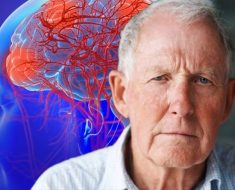When Beth Israel Deaconess Medical Center in Boston decided to make the move to a cloud-based environment to support a host of new applications and prepare for a cloud-centric future, Manu Tandon, the health system’s chief information officer, knew preparedness and experience would be the twin pillars of success.
“We are one of the few medical centers running a homegrown electronic health record system, and we have several other major systems that we run ourselves,” Tandon explained. “That means we have a big need for a data center, and so we have been managing our own data center for decades.
One of the reasons BIDMC was looking for other options when it comes to data storage was the lease for its own data center is coming up, which means they started looking at cloud options more than three years ago.
“After nine months of design work, we realized we needed to own the process and make sure it was designed in a secure manner,” said Tandon.
He noted that while most cloud providers offer a basic infrastructure environment, it’s up to the customer to design it – and to own it.
“We had expertise in server management, so we brought that into the design process, and we opened it for business about two years back, and have since then migrated about 50 percent of our data center, include our HR system, our finance system, and other applications to the cloud,” Tandon explained.
He said the goal now is to try and finish this migration by the middle of 2021, but he points out that not everything is suitable for the cloud.
“Radiology systems, for example, are not going to perform well on the cloud, and the performance will not work,” he said.
Crucially, Tandon pointed out that while BIDMC will continued to have residual data centers, any new apps it purchases, buys or builds will follow a cloud-first strategy.
He said what he and his colleagues discovered very quickly is that it’s easier to try out new innovations on the cloud, because the cycle times to test something are dramatically lower in a cloud environments, because you can essentially just turn a service on to try it.
“That helps us develop a whole innovation program around the cloud,” he said. “Mobile, digital, as well as machine learning and artificial intelligence solutions can all be hosted on the cloud.
He said that while he expects the health system’s migration to the cloud will end within the next 18 months or so, the innovation part will continue to be a contributing factor as the hospitals looks to develop additional EHR solutions through its EHR+ strategy.
“We’re looking to do all these additional EHR functions and applications on the cloud,” Tandon explained.
To that end, the BIDMC launched the Health Technology Exploration Center in 2018, which leverages the power of emerging cloud services to support medical decision-making and innovative new mobile applications that help patients to manage their own health while improving overall communication between patients and their health care providers.
With HTEC, Tandon said, the vision is to take a look at technologies that have already matured in the non-healthcare sector and bring them in.
“That ranges from AI and ML to technologies like natural language processing,” he said. “The platform we are using to explore these options is the cloud, because it’s so much faster on the cloud – it plays a key role in HTEC.”
“After nine months of design work, we realized we needed to own the process and make sure it was designed in a secure manner.”
Manu Tandon, Beth Israel Deaconess Medical Center
Tandon points to BIDMC’s experience in managing its own data centers as a critical factor to the success of its cloud migration.
“In our case, because we basically moved at the pace we wanted to move, we moved non-critical apps first, and we spent a lot of time designing and training, there weren’t so many unexpected challenges – we basically found it exactly as we predicted it,” he said. “If we had just pushed things over, it might have gone differently.
He said the cloud can actually be much more secure or much less secure than on-premises solutions, depending on how much planning is put into it.
“If you don’t pay attention to the way the cloud is configured, it can be quite insecure – one should not make the assumption that because it’s on the cloud its secure,” he said.
The goal at BIDMC was to have the cloud no less secure than the provider’s on-premises services, and Tandon said the hospital was able to do that by making sure staffers were comfortable with the pace at which they were moving, and were making the most of their experience and training.
In the years that Tandon has been facilitation the migration to cloud technologies, he the cloud has matured, gotten less expensive, and cloud providers now offering a lot of add-ons.
“It’s no more just based off computing and storage. The availability of platforms that the vendors are doing is growing – for example some vendors using programs that make it easier to write machine learning, which is something new.”
Tandon said the cloud has enabled the democratization of technologies that were limited to labs or scientists only.
“A lot of our app developer types were able to re-train themselves and write code because of the frameworks available,” he explained.
He also pointed to the big strides made in natural language processing solutions and OTC solutions, and some of them have “become pretty easy to use.” And, as they become more popular, it means its easier to find more resources on the open market.
For other providers looking to make the move to cloud-based services, he says its important to ask around and seek advice from other providers, and take a close look at their experiences.
“The vast majority of medical centers are not-for-profit and have lots of challenges, and so there are a lot of similarities across our situations,” said Tandon. “Hospitals are constantly under cost pressure and need to ask themselves if they want to be in the data center business.”
Manu Tandon will speak at the HIMSS20 Cloud Forum in Orlando, March 9 at Rosen Centre Grand Ballroom D.
Nathan Eddy is a healthcare and technology freelancer based in Berlin.
Email the writer: [email protected]
Twitter: @dropdeaded209
Source: Read Full Article






